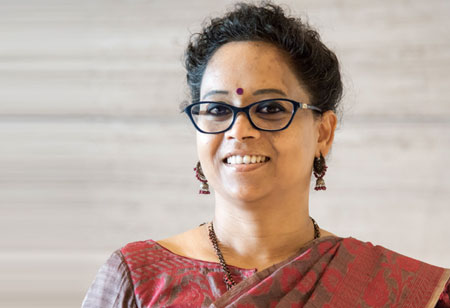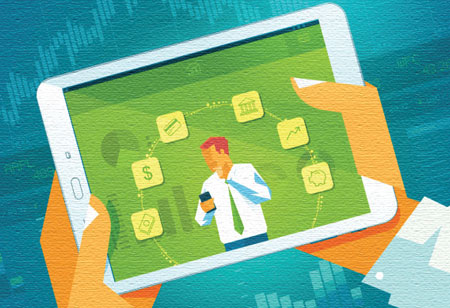By Saroj Topno Mittra, Director, Margdarshak
 An alumnus of University of Calcutta, Saroj specializes in financial management and accounting. She has successfully implemented financial management policies & practices in the current organization and has addressed challenges & issues relating to finance.
An alumnus of University of Calcutta, Saroj specializes in financial management and accounting. She has successfully implemented financial management policies & practices in the current organization and has addressed challenges & issues relating to finance.
In the era of digital revolution, all businesses across sectors are embracing digital transformation to take a giant leap in business effectiveness and outreach. Digital solutions and new technologies also offer great potential to overcome the hurdles of balanced socioeconomic development. With two-third of the world’s population now connected to the mobile devices, the digital channel is opening up new opportunities to reach unserved and underserved markets more quickly and efficiently. A major area of concern, particularly in India is the access to finance for the poor and the channel of delivery to these unserved section of society.
Despite significant progress, access to finance still remains a challenge. The poor find few takers when it comes to providing credit to them for strengthening their livelihood. The common conception amongst the financial institutions even now remains that ‘Poor are not bankable’. The suppliers of credit do not believe that it can be economically viable to provide financial services to the poor. The bank officials are afraid of the poverty and lack of securities for the credit facility. On the part of borrower, the lack of knowledge and ability to communicate directly with the credit officials, fear of rejection, and over patronizing approach of the bank officials are few reasons for the poor remaining financially excluded. As of date, almost 1/5th of the population of the world are unbanked. India has the world’s second largest unbanked population behind China. With the current government launching one of the biggest financial inclusion drives in India under the Pradhan Mantri Jan Dhan Yojana (PMJDY), the number of Indians having bank accounts have increased to 80 percent in 2017 from 53 percent in 2014. However, as per the latest Global Findex database report of World Bank, about half of these bank accounts are inactive, suggesting many Indians are still not integrated into the formal banking system. India has the world’s highest share of inactive accounts, about twice the average of 25 percent for developing economies.
In financial services too, digital technology and data allow financial service providers to serve the financially excluded more effectively. Digital finance is a rapidly evolving area. In such an environment the relevance of Micro Finance Institutions (MFIs) emerge over the financial horizon where digitization of financial services can extensively increase the outreach and reduce significantly the cost of financing to the poor. Right from sourcing loan applications using mobile devices to using data analytics in determining risk profiles for financially excluded and new customers, traditional microfinance providers have begun to explore ways to digitize their existing operations or assets to keep-up with new technology. The digital data can be gathered, stored, retrieved, structured, cleaned, and analyzed much more efficiently than traditional paper based methods. It also helps institutions to lower costs, provide customer centric products, reduce fraud, identify cross selling opportunities, and expand their customer base. Mobile solutions offer instant transactions, savings, credit, and even insurance in rural areas and urban neighborhood where no bank has ever had a reach.

Short comings & Obstacles to Inclusive Digital Finance
Rural penetration still remains a major challenge. As per statistics 65 percent of the population in rural areas have access to phone, only 22 percent of Indian adults use the internet and 17 percent own smartphones, a must have for many digital financial services platforms. Poor access to electricity and internet penetration hinders connectivity in India, which is a contributing factor to slow adoption of mobile banking. Moreover, most of the MFIs are not thinking beyond digitization their existing operations and products.
The proportion of the Indian population accessing financial institution accounts from their phones or the Internet, making digital payments or using mobile money wallets is significantly lower than in other developing economies. The Global FIndex data shows, in 2017, five percent of Indians accessed a financial institution account from their phone or the Internet, and two percent of the population owned a mobile money account. The majority of Indians are not yet experiencing the benefits of mobile banking of transferring money, paying bills, checking balances, checking deposits, getting account alerts, and much more.
The Way Forward
Digital Finance is a powerful channel for making financial services accessible to the poor at low cost & risk. Digitized operations and alternative distribution channels bring a range of benefits to microfinance providers and their customers that traditional branches and paper-based banking cannot provide. Moreover, Digital Financial Services allow customers with no access to formal banking to begin building a transaction history, which will later enable them to access loans more easily. While MFIs recognize the value and necessity of digitizing their business models, more efforts need to be put into creating dedicated digital products and services by forming partnerships with banks and non banks, including FinTech companies each assuming different responsibilities according to their area of specialization and optimize synergies between digital finance and microfinance. Going digital is not only a technology exercise, it requires full buy-in from the management, the employees and the clients & must be seen as a strategic priority. By leveraging the growth of usage of mobile phones, digitization can reduce cost, increase efficiency and allow financial service providers to increase its outreach, enabling financial inclusion to reach the last mile.
We use cookies to ensure you get the best experience on our website. Read more...